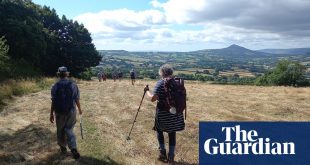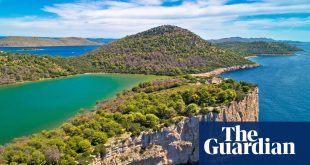France, the world’s most popular tourist destination, is getting back on track this summer with a focus (and a €50m government investment) on eco-friendly holidays, slow travel and sustainable tourism. That means going beyond the usual hotspots to an unexplored France of bamboo forests, pink salt pans, chalets on stilts, prehistoric horses and maybe a weekend as a lighthouse keeper.

Tiny islands, Brittany
Brittany’s tourist numbers are set to surge this summer after two years of coronavirus, so this is a good time to head to one of the tiny islands off the west coast for a few nights of stargazing with puffins and gulls.
A 90-minute ferry ride from Brest, Île Molène has no cars or bikes and is only 1,200 metres long. It’s a place for short hikes, watching the fishing boats in the tiny harbour and trying fried fish at Au Vent des îles. Among the slate-roofed cottages in the village is the Musée du Drummond Castle (open every afternoon by appointment), dedicated to a British ship that sank off Molène in 1896. All but three of the 242 people aboard drowned and 29 are buried in the local cemetery.
Part of the Molène archipelago, the Île de Quéménès, is only 300 metres wide and inhabited by just one family, who run an organic farm and guesthouse. It’s a perfect stay for people who want to paint, play board games and fish off the rocks.
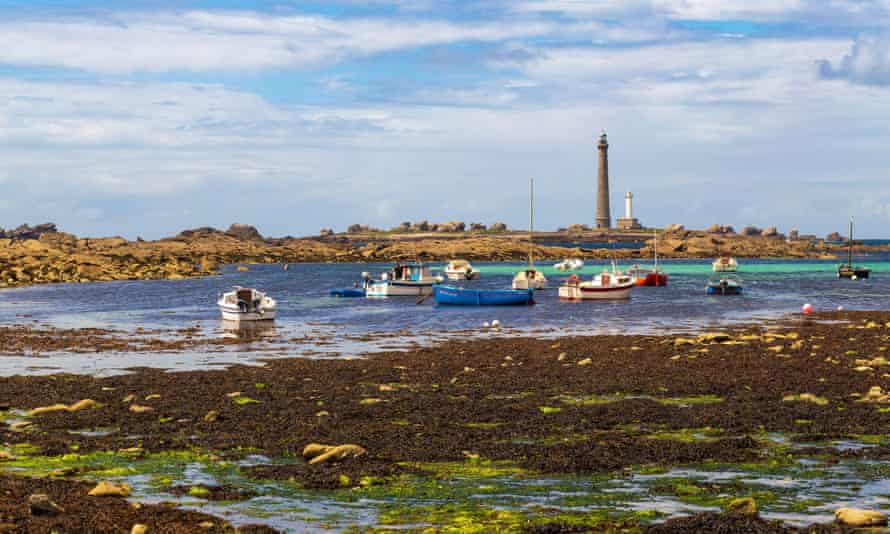
Île Vierge, a mile off the mainland at Plouguerneau, takes on the full force of the north Atlantic and has two lighthouses, one of which is the tallest “traditional” lighthouse in Europe, with 365 steps to the top (open April-Oct). The other can be rented out. The island is a haven for birds and has a few tiny pebble beaches.
For bird-lovers, a boat leaves the Trestraou beach in Perros-Guirec for the Île Rouzic on a round trip (no disembarking) to watch thousands of puffins, kittiwakes, shearwaters, boobies and razorbills dive into the water between the bobbing grey seals.
Where to stay
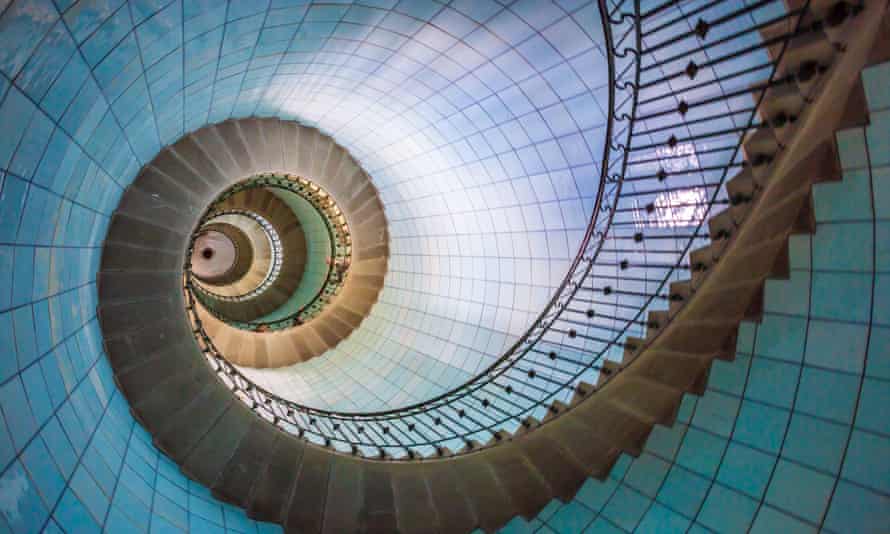
Eco-friendly huts at Les Refuges de Mer (from €15pp) are a 15-minute walk – only possible at low tide – from Molène on the tiny islet of Lédénez Vraz. The refuges use only harvested rainwater, and electricity comes from solar panels.
On Quéménès, the eco-friendly guesthouse (from €588 for two or €2,450 for the whole house) has three bedrooms and the price includes a full-board, two-night, three-day stay, fishing rods, binoculars and pick-up from Molène island.
On Île Vierge, La Maison des gardiens de phare (from €550 for two nights) is the former lighthouse keepers’ cottage, transformed into a eco-sustainable holiday let sleeping nine.
Ferry company Penn Ar Bed sails once a day to Molène from Brest and Le Conquet, while Vedettes des Abers runs passenger services between Plouguerneau and Île Vierge.
Canal de Bourgogne, Bourgogne-Franche-Comté

It may not be one of France’s celebrated waterways, but the Canal de Bourgogne, which runs through the Côte-d’Or and Yonne, passes by chateaux, abbeys, forges and medieval villages, and is the perfect length for a week’s cycling or walking holiday. Most visitors come to Burgundy for the wine, which leaves the museums and canal towpath relatively empty.
Tonnerre, a good starting point 100km north-west of Dijon, is only an hour and 40 minutes by train from Paris and perfect for exploring the 16th-century Château de Tanlay (guided visits only) and the Château d’Ancy le Franc, a masterpiece of Renaissance architecture which has sculpted courtyards and gardens, 17th-century murals, and runs cookery courses in the same kitchens that created meals for Louis XIV.
Built on a pink granite outcrop, Semur-en-Auxois is far enough from Chablis and Beaune to be off the wine trail and has a handsome gothic church, solid ramparts and stone bridges. It is famous for holding the annual Course de la Bague, the oldest horse race in France (it began in 1639) and the Course des Chausses, where locals run through the cobbled streets dressed in medieval tabards and jester’s stockings, a race that dates back to 1369.
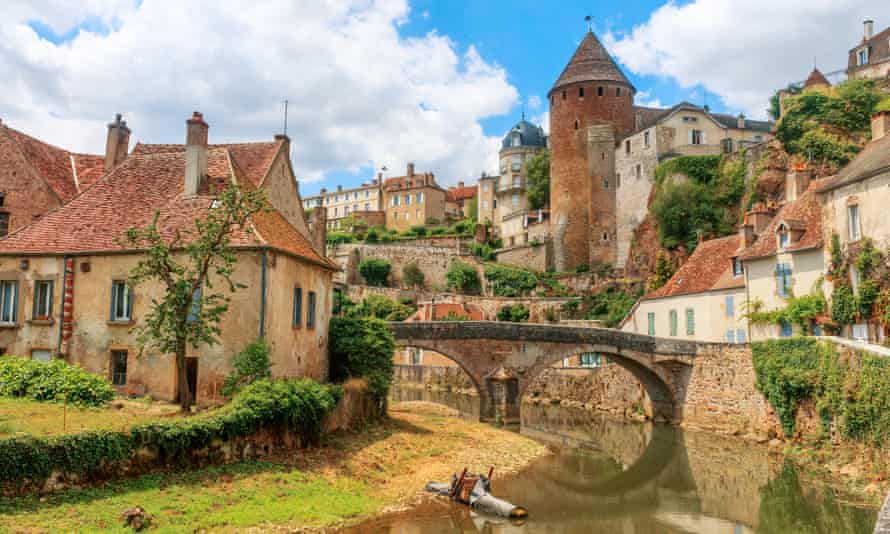
Nearby is Grande Forge de Buffon, an 18th-century steelworks with waterwheel, and fairytale Châteauneuf-en-Auxois, a walled village with a five-tower, 12th-century chateau, complete with moat and dungeon.
For cyclists, Véli-Bourgogne has bike hire at several locations along the canal (€20 a day, €104 for seven days), and La Bicyclette Verte can organise an entire six-day, five-night tour, including hotels. Visitors can also take an electric boat for a two-hour cruise, or head to the nearest large town, Dijon, and drop by its brand new gastronomy and wine centre, which hosts gourmet food galleries, cooking demos, a library of 10,000 cookbooks and sommelier training.
Where to stay
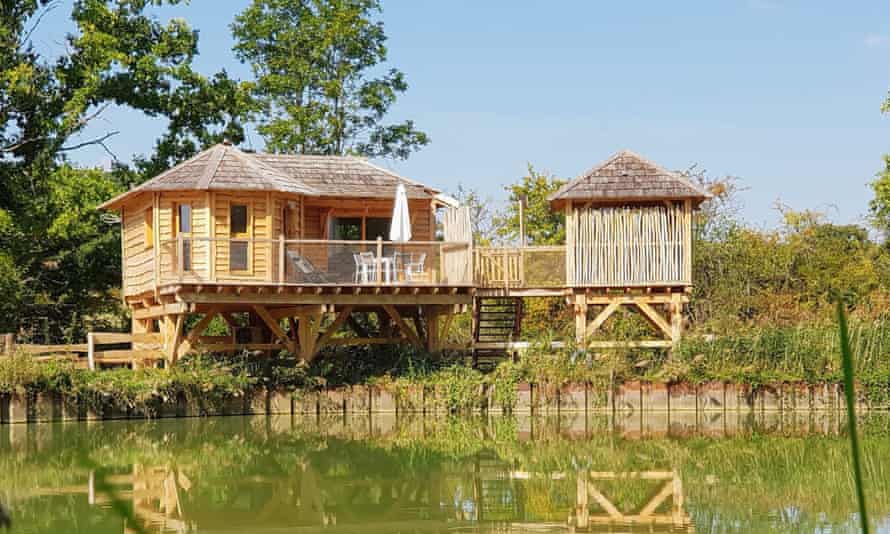
In Semur-en-Auxois, the medieval Hotel Relais de la Côte d’Or has doubles from €95 room-only. Petite Forge de Buffon offers rural gîtes from €90 (sleeping four) and €120 (nine), and Lodges du canal de Bourgogne has five tree houses and towpath huts from €185.
Andon and Saint-Vallier-de-Thiey, Provence-Alpes-Côte d’Azur
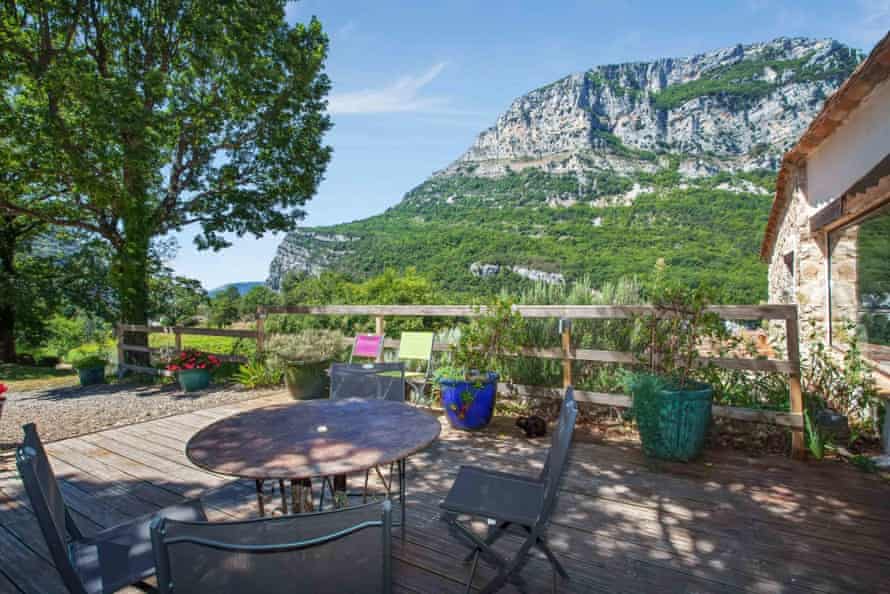
A 90-minute zigzagging drive from Nice, beyond the hills of Grasse, is a landscape of grey peaks, pine forests and gorges – a prehistoric setting enhanced by the grazing bison and wild Przewalski horses at La Réserve biologique des Monts d’Azur in Andon.
This organic nature reserve was started almost 20 years ago by vet Patrice Longour and his wife, Alena, who took over a former hunting reserve in the Parc naturel régional des Préalpes d’Azur. Its 700 hectares are the backdrop for a rewilding programme that promotes sustainable tourism. Visitors can stay in wooden eco-lodges, a “bioclimatic” villa, or rooms above the organic restaurant. Stays can include a safari walk (or horse-drawn calèche ride) among the bison, wild horses, boar, elk and roe deer that roam the forests and prairies of the reserve. It’s an amazing experience, especially the sight of snappy Przewalski stallions charging around the pastures.
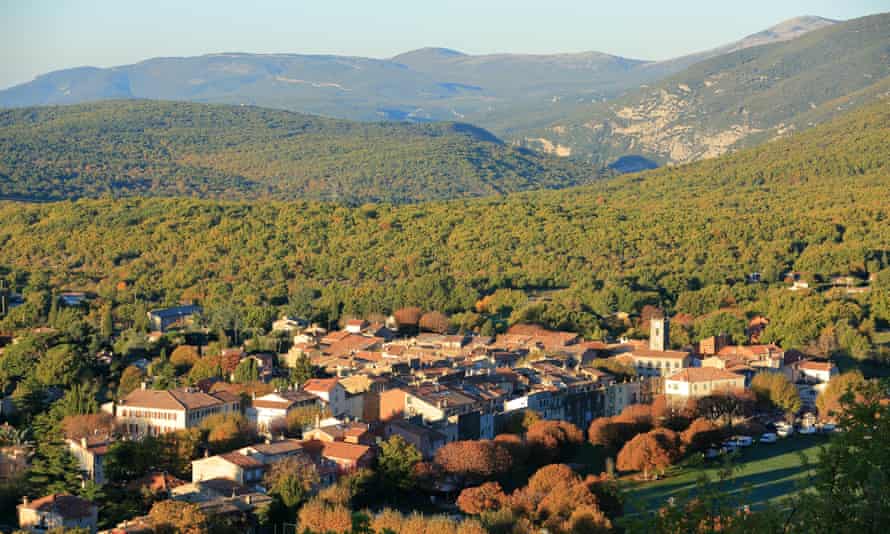
The pre-Alps regional park also encompasses Saint-Vallier-de-Thiey, a popular village for hikers and mountain bikers. Three kilometres from the centre is the Grotte de Baume Obscure, open every day in June, July and August). Visitors can wander alone through the cave’s narrow passages, led by a fairy-flute soundtrack and periodic spotlight illuminations of stalactites, potholes and rock pools. It’s not for the faint-hearted, though, as there are narrow gangways and steep staircases along the 700-metre trail, everything is dripping and tiny bats hang overhead near the exit. Once out, there’s a gift shop selling fossils and jewellery and a snack zone for hungry children.
A short drive north-east is the Calern plateau in Caussols, whose observatory, is open for visits on Sunday afternoons. Tickets include entry to the giant telescopes and a walk in the moonscape setting (visits in English are available). The nearby Auberge de Caussols serves rustic food in a homely dining room.
For a more physical experience, the Estéron River gorge is ideal for canyoning from the village of Aiglun. Altitude 06 runs five-hour canyoning sessions for €80pp. One of the region’s best hikes is up to Le Castellaras de Thorenc, a three-hour trek to the ruins of a perched medieval village with amazing views of the Pays de Grasse.
Where to stay
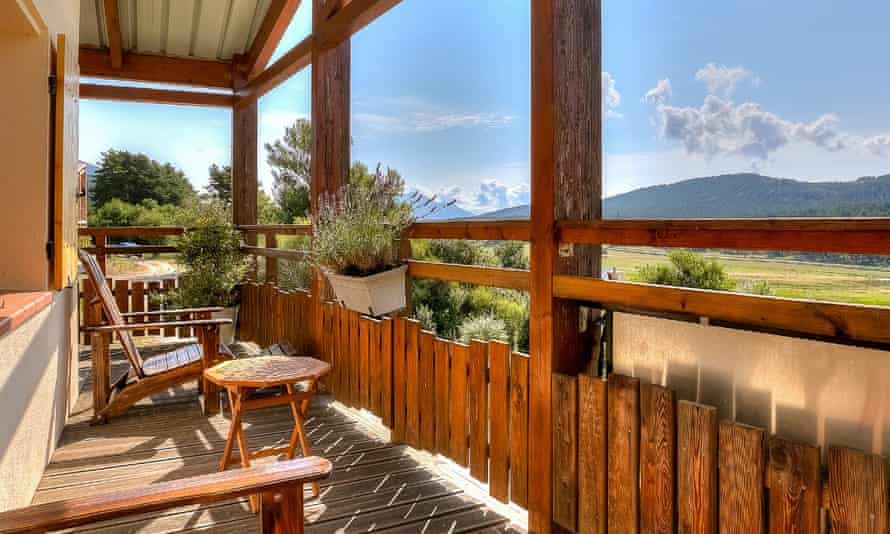
Visitors can stay in various buildings at the Monts d’Azur reserve (half-board from €129pp). La Cascade (doubles from €65) in nearby Courmes has rooms overlooking the Gorges du Loup with a pétanque court, a pool and homecooked dinners.
La Lozère and Anduze, Occitanie
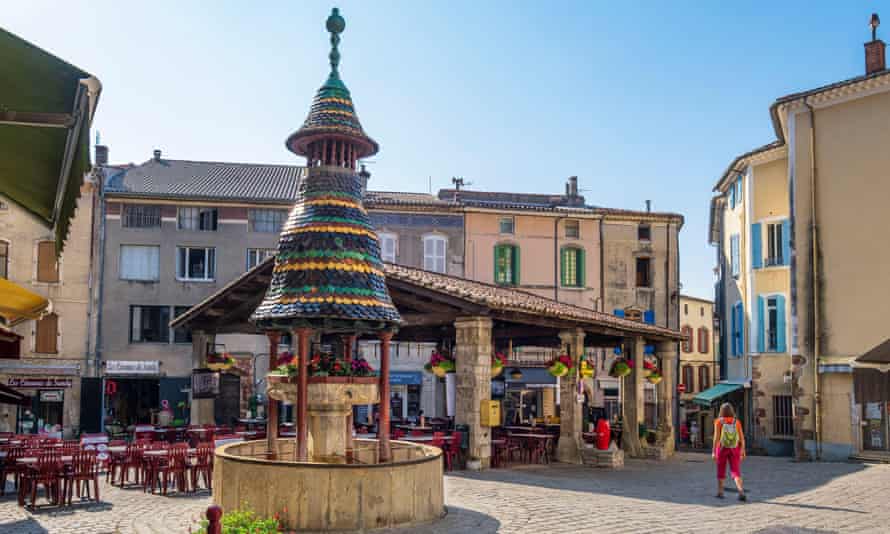
In his 1879 Travels with a Donkey in the Cévennes, Robert Louis Stevenson arrives in La Lozère and his first instinct is to rid himself of his clothes and “bathe my naked body in the mountain air and water”. La Lozère remains one of France’s wildest, least-touristy regions, with a volcanic landscape of heather-clad hillsides, green meadows, dense chestnut forests and fast-flowing rivers – and there are still donkeys for hire.
Lozère’s capital, Mende, is known for its croquants (almond biscuits) and coupétado, a bread-and-butter pudding made with prunes and cognac, both good mountain sustenance before an adventure in the Parc national des Cévennes. Continuing Stevenson’s journey south (on foot or mountain bike), travellers pass through the Protestant stronghold of Le Pont-de-Montvert, where there’s an eco-museum about the area (open July and August), and, for competent hikers, a route up to the summit of Mont Aigoual, site of France’s last inhabited meteorological observatory (open May to September, free entry).
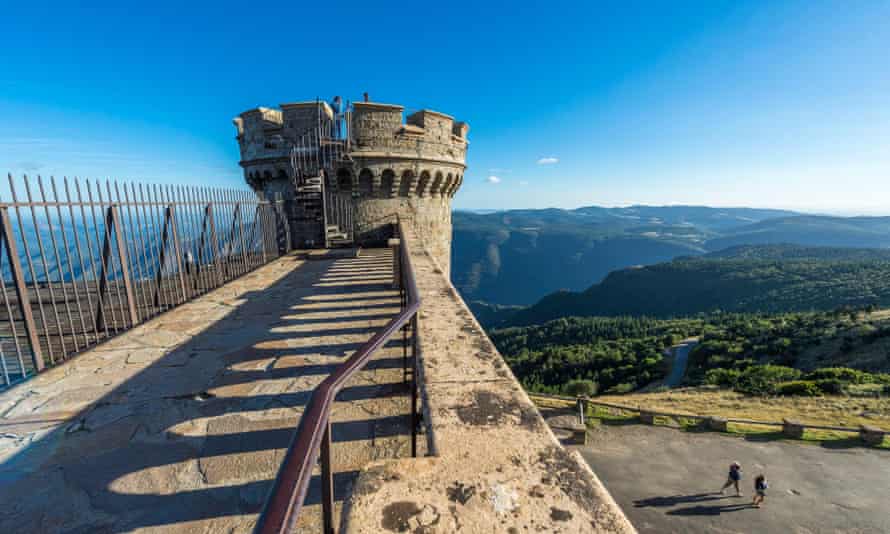
There is also great hiking around weird rock formations at the Chaos de Nîmes-le Vieux, but for those who fancy something gentler, or are put off by the annual 170 days of rain recorded on Mont Aigoual, the town of Anduze, a short drive east, is lively and attractive. Its 1920s steam train runs to Saint-Jean-du-Gard and stops off at the town’s bamboo plantation. Started in the mid-19th century by local botanist Eugène Mazel, the Bambouseraie now has more than 1,000 varieties of bamboo, an avenue of 40-metre sequoias and a treetop net walkway (open every day, adult €13.90, over-six years €9.90). Andouze, on the banks of the Gardon river, has a 17th-century pagoda fountain in Place du Marché. The whitewashed vaulted cellar at Le Tife-Tafe cafe is good for a craft beer and a Cévennes salad of walnuts, goat’s cheese and sweet onions.
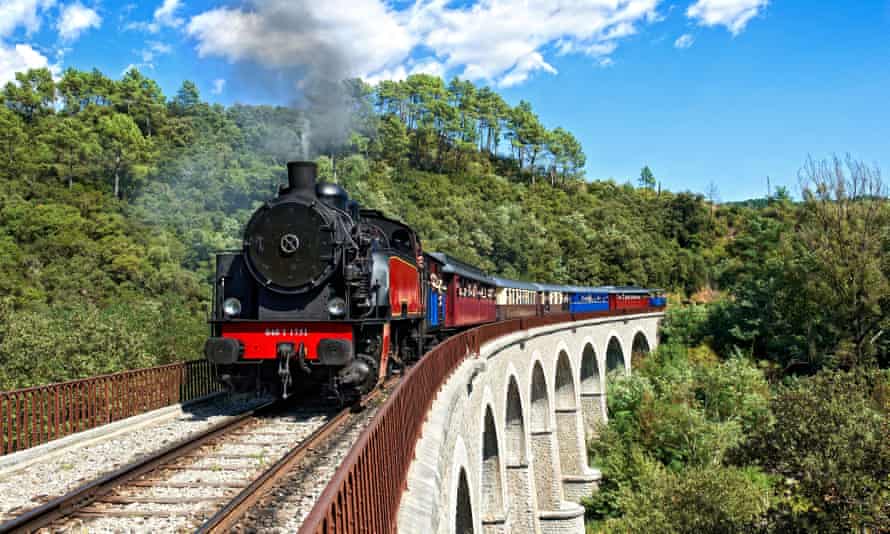
Where to stay
On Mont Lozère, the Maison Victoire offers half-board for €124 for two and is part of group of local campsites, gîtes and B&Bs. In Anduze, Le Garage des Cévennes (doubles from €92 room only) is a cool hotel-cafe-restaurant doubling as a motorbike-parts design workshop.
Gruissan and Narbonne, Aude, Occitanie
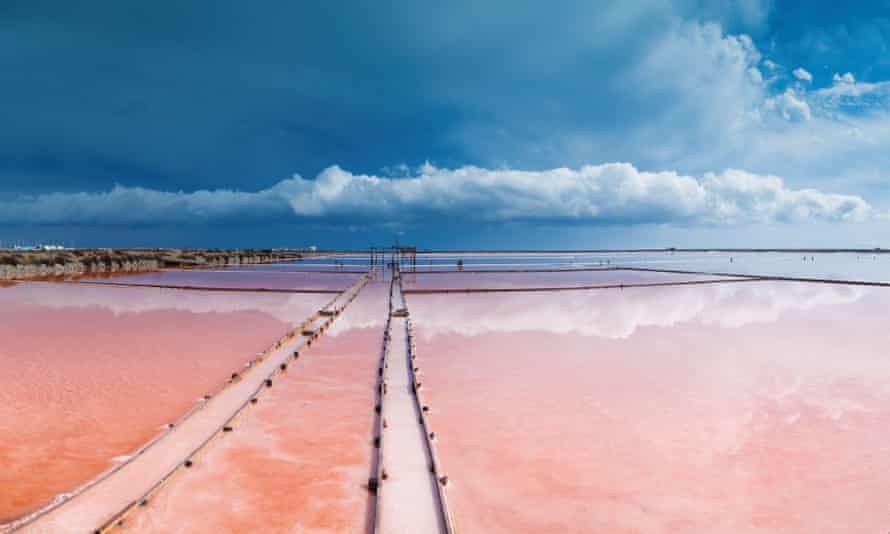
On the Mediterranean between Montpellier and Perpignan, Gruissan is a colourful blend of smart French seaside resort and American suburbia.
French film buffs may recognise Gruissan from the beachfront chalet in the opening scenes of Jean-Jacques Beineix’s erotic, unsettling Betty Blue (37°2 le matin). Betty sets the chalet alight after an argument, but there are more than 1,000 similar wooden shacks, all built on stilts that form a vast, floating chalet-park. It’s a striking sight: poetic, multicoloured and unlike anything else in France.
Behind Gruissan’s beaches are its salt pans, huge pink and mauve rectangular lakes, dotted with flamingos and sauniers bent double as they load salt crust into wheelbarrows. Trottup offers tours on big-wheeled electric scooters around the salt lakes and forests (two hours, €49) and electric boats can be rented along the quayside (€35 an hour for a five-seater or €110 for three hours in a seven-seater Scoop).
There’s a bracing hiking excursion to the Gouffre de l’Oeil Doux, where steep limestone cliffs plunge into a natural emerald pool. Swimming is prohibited, but it’s a geological curiosity and a good spot for a picnic under the parasol pines.
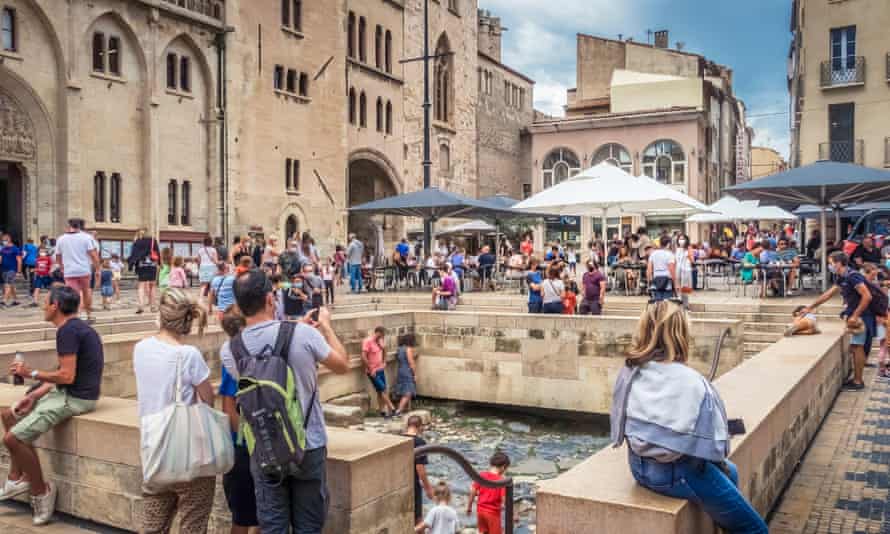
Ten-minutes’ drive further inland is Narbonne, once capital of Rome’s first colony in Gaul and now the principal city in France’s newly named Côte du Midi. Narbo Via, a museum dedicated to Roman artefacts, opened last year on the outskirts of the city. The Norman Foster + Partners-designed building includes a gallery wall made up of 760 ancient funerary blocks of stone (adults €8, free for under 26s and combined entrance with Amphoralis, a Roman workshop for producing amphora and the Horreum, Narbonne’s underground Roman grain store, is €13).
Narbonne is spared the deluge of the summertime coach parties that descend on the nearby fortified town of Carcassonne. It’s a charming, provincial city with some colossal structures, the Archbishops’ Palace and Gothic cathedral, the more “bijou” Pont des Marchands and the birthplace of singer-songwriter Charles Trénet. Trénet is best known for composing La Mer (Beyond the Sea), which he wrote while on a train passing the lagoons of the nearby coastline.
Where to stay
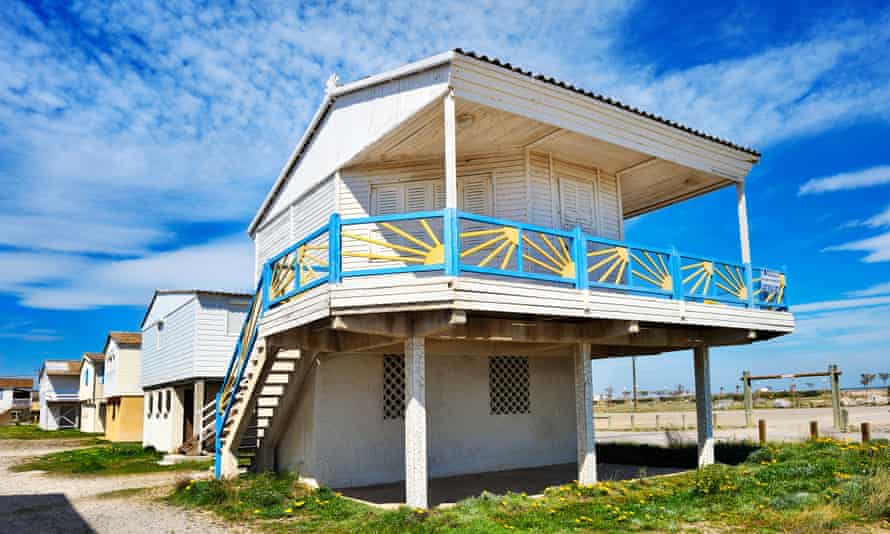
Gruissan’s wooden chalets can be rented through Abritel (two-bedroom chalet from €80 a night). In Narbonne, the former Carmelite Convent (doubles from €55) has stylish rooms and apartments close to the centre, and Villa Ambrosia has a hot tub, Zen garden and indoor pool (doubles from €115).
Baccarat and Lunéville, Grand Est
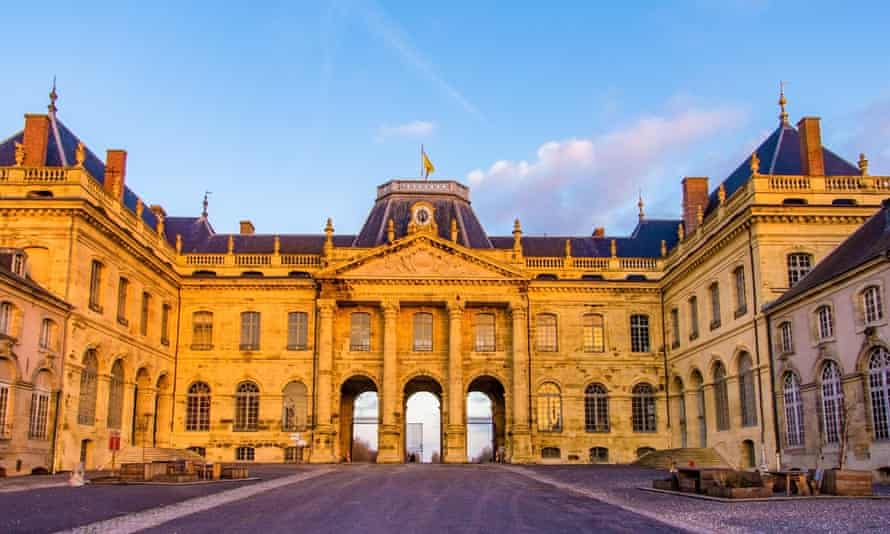
Baccarat is an important stop on the decorative arts route, which runs through Alsace and Lorraine in the north-east of France and includes Nancy for its art nouveau, plus fine carpentry, ceramics, the glass museum in Saint-Louis-lès-Bitche (site of the first glassmaker in France; open Wednesday to Monday) and the Lalique museum in Wingen-sur-Moder (open daily April-Oct; Tues-Sun rest of the year) on the northern side of the Vosges natural regional park.
The Baccarat company, which takes its name from the town on the banks of the Meurthe River, was founded in 1764 to produce soda glass for windows but switched to focusing on exclusive lead crystalware when it was acquired by a Belgian company in 1817. The Baccarat crystal museum (open daily July-August) has more than 2,000 pieces in gleaming showcases, and furnaces are fired up regularly in the workshops opposite.
The town’s modern riverside church of Saint-Rémy has 20,000 pieces of coloured Baccarat crystal in its stained-glass windows.
To the north-west is Lunéville, which was once celebrated for its decorative faïence potttery, but has become better known for the enormous Château de Lunéville. The “Versailles of Lorraine” has extensive parterre gardens and three of France’s most notable Enlightenment philosophers, Voltaire, Rousseau and Montesquieu, stayed there. The deposed Polish king, Stanislaw Leszczynski, lived on a country estate and his penchant for dipping his brioche into a sweet-wine syrup led to his pastry chef creating the first rum baba. It’s on the dessert menu at Le Lunéville restaurant, which also does quiche lorraine and foie gras marinated in the local gewurztraminer wine.
Where to stay
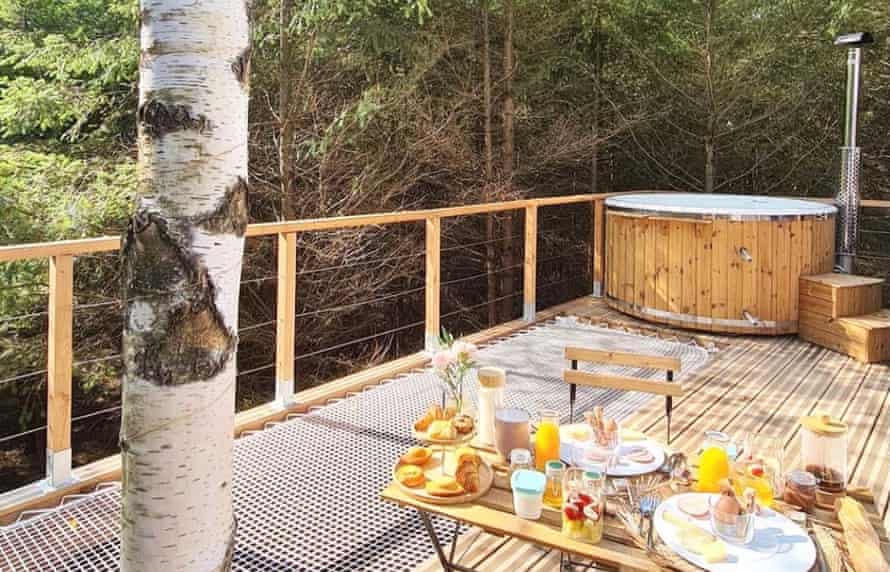
East of Baccarat in Badonviller, Les Cabanes du Lac du Pierre-Percée (doubles from €160 B&B) has cabins, treehouses and chalets on the lake. Domaine Ouréa in Sainte-Barbe has deluxe ecolodges for two in the middle of a forest from €269 a night.
 Top Naija News: Nigerian News, Breaking News Nigeria and World News Top Naija News is a daily news publication in Nigeria, delivering the latest breaking news in Nigeria and around the world.
Top Naija News: Nigerian News, Breaking News Nigeria and World News Top Naija News is a daily news publication in Nigeria, delivering the latest breaking news in Nigeria and around the world.

